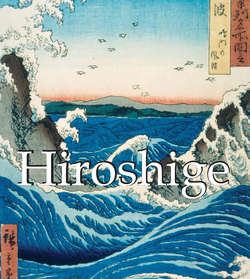Читать книгу Hiroshige - Mikhail Uspensky - Страница 3
На сайте Литреса книга снята с продажи.
Biography
ОглавлениеThe Suidobashi Bridge and Surugadai (Sudoibashi Surugadai), May 1857.
Colour woodblock print, 36 × 24 cm.
Gift of Anna Ferris, Brooklyn Museum of Art, New York.
1797: Ando Hiroshige was born under the name of Ando Tokutaro. He was the son of the warden of the fire brigade assigned to the Edo Castle. Various episodes indicate that the young Hiroshige was fond of sketching and it is most likely that a fireman, who had studied under a master of the traditional Kano school of painting, oversaw his tutelage.
1809: His mother died. Shortly after, his father resigned his post, passing it on to his son. Early the following year, his father died as well. Hiroshige’s actual daily duties as a fire warden were minimal, and his wages were small.
1811: At the age of fourteen, the young Hiroshige had the chance to join the famous Utagawa painting school and became a pupil of Utagawa Toyohiro, a famous Japanese ukiyo-e artist.
1812: He obtained a school license and was rewarded with the name Utagawa Hiroshige. In the ukiyo-e literature he is usually referenced as Hiroshige Ando.
1818: His first published work appeared.
1830s: Hiroshige did not immediately begin to produce landscape prints. His main output consisted of prints of beautiful women (bijinga) and actors (yakushae). He gradually gave up figure prints for landscapes. He started, under the influence of the great Hokusai, the series that made him famous.
1832: He traveled between Edo and Kyoto along the famed highway called the Tokaido; he stayed at the 53 overnight stations along the road and made numerous sketches of everything he saw. He published a series of 55 landscape prints entitled the “Fifty-three Stations on the Tokaido” – one for each station, as well as the beginning of the highway and the arrival in Kyoto. The success of this series was immediate and made Hiroshige one of the most popular ukiyo-e artists of all time.
1850s: Some vertical-format compilations of landscape prints date from this period such as “Famous Places in Kyoto” (1834), “Eight Views of Lake Biwa” (1835), “Sixty-nine Stations on the Kiso Highway” (c. 1837), and “One Hundred Famous Views of Edo” (1856–58).
1858: Hiroshige died of cholera and was buried in a Zen temple in Asakusa, Tokyo.
* * *
